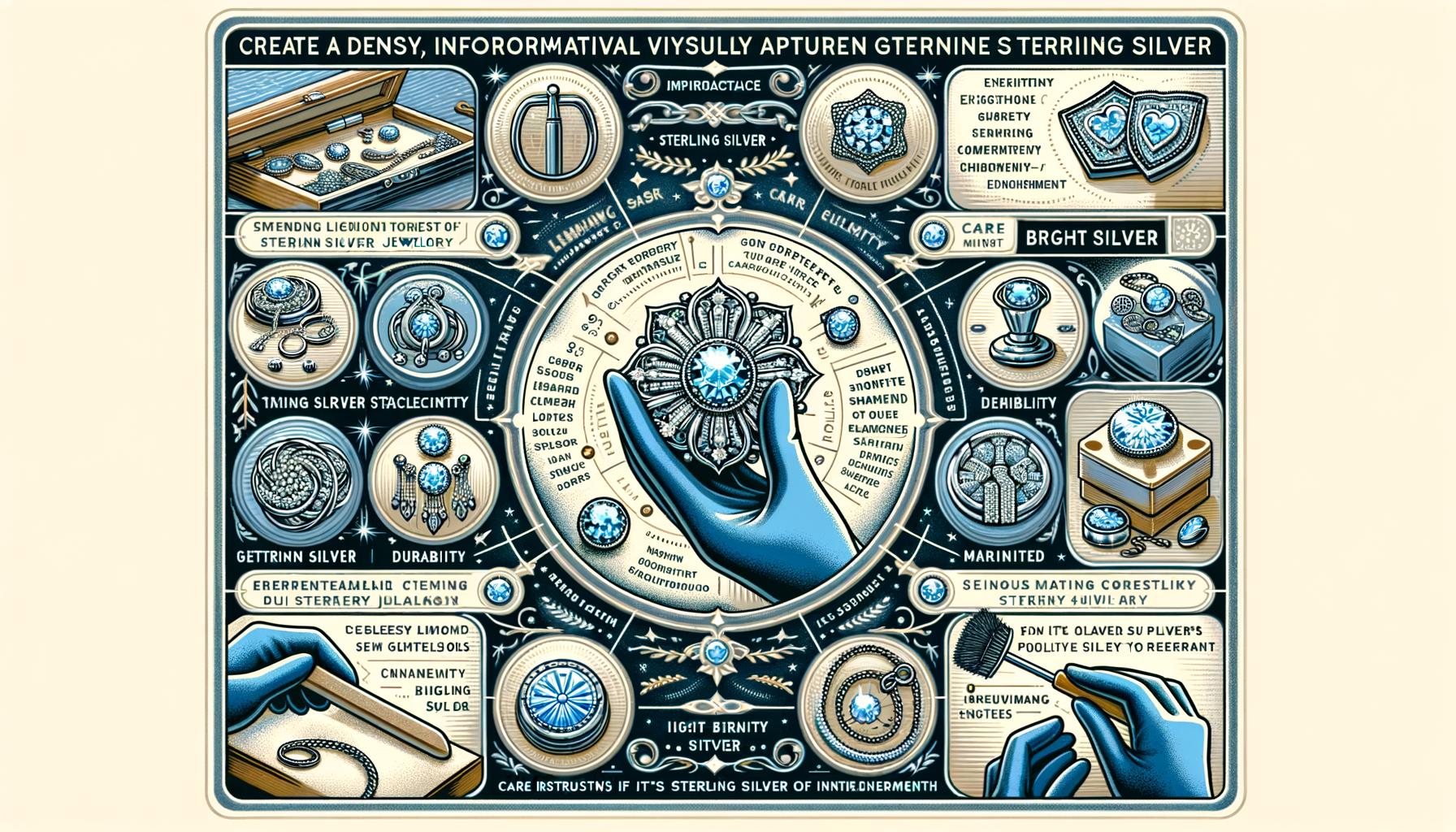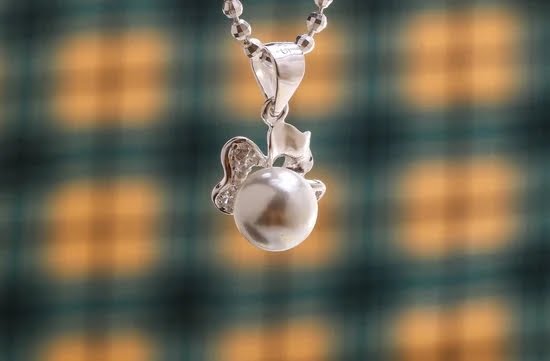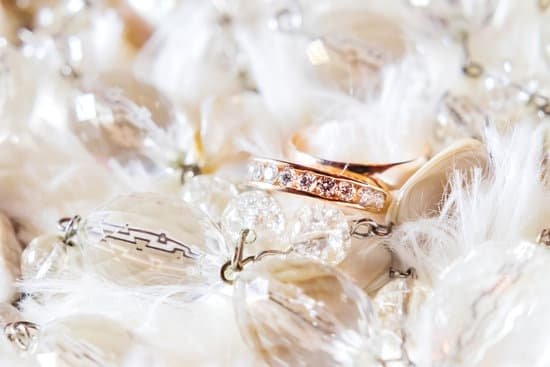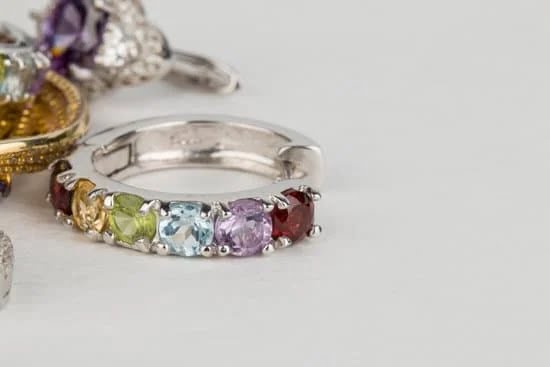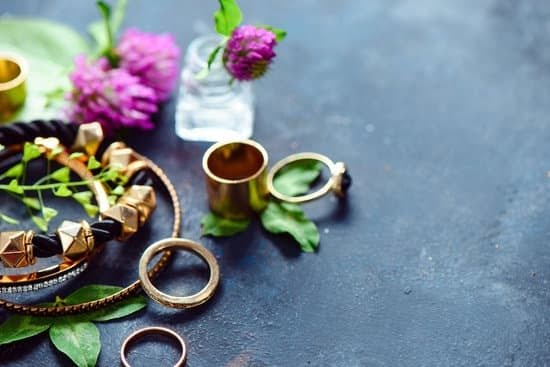Sterling silver jewelry has a timeless allure that appeals to many, making it a favorite choice for fashion enthusiasts and casual wearers alike. Whether you are drawn to its subtle elegance or its versatility in design, there is much to appreciate about this precious metal. In this article, we’ll unveil all you need to know about sterling silver jewelry, guiding you through its fascinating history, the craftsmanship involved in its creation, and tips for choosing the best pieces.
The appeal of sterling silver lies not only in its lustrous appearance but also in its historical significance and superior properties. As we delve deeper into this guide, you’ll discover what distinguishes sterling silver from other types of silver, including a breakdown of its unique composition and why the 92.5% purity mark is essential.
Additionally, you’ll learn about the rich cultural heritage associated with sterling silver jewelry as we journey through different eras and iconic styles that have left an indelible mark on fashion.
Apart from understanding its origins and history, appreciating the intricate craftsmanship behind sterling silver jewelry enhances our admiration for these pieces. From the meticulous techniques employed by skilled artisans to the tools they use, each piece reflects unparalleled quality and value achieved through diligent effort.
Moreover, we’ll highlight practical advantages such as durability, affordability compared to gold or platinum, design versatility, and hypoallergenic properties-making it an exceptional option for those with sensitive skin. This comprehensive guide aims to equip you with insightful knowledge so you can make informed decisions whether you’re purchasing your first piece or adding to an existing collection.
What Is Sterling Silver?
Sterling silver is a highly regarded material in the world of fine jewelry, renowned for its beauty, versatility, and durability. The term “sterling silver” refers to an alloy composed of 92.5% pure silver and 7.5% other metals, usually copper.
This specific composition ensures that the metal retains its luster and strength while being suitable for intricate designs. All you need to know about sterling silver jewelry begins with understanding this blend – it combines the best attributes of pure silver’s visual appeal with additional robustness essential for everyday wear.
The origin of sterling silver dates back to the 12th century when it was first used in coinage due to its reliable value and moldable properties. Historically, societies as diverse as ancient Egypt and medieval Europe have revered this metal for both decorative and monetary purposes. By maintaining a consistent standard of purity at 92.5%, sterling silver set itself apart from lesser grades of silver, becoming a mark of quality that has endured through centuries.
Today, sterling silver continues to be synonymous with quality craftsmanship and enduring elegance. Artisans utilize various techniques to work with this alloy, capitalizing on its malleability without compromising on sturdiness. Whether it’s cast into intricate shapes or adorned with gemstones, sterling remains a favorite among jewelers due to its adaptability and relatively lower cost compared to other precious metals like gold or platinum.
| Aspect | Details |
|---|---|
| Composition | 5% Pure Silver + 7.5% Other Metals (Usually Copper) |
| Historical Use | Coinage in Ancient Societies; Decorative & Monetary Functions |
Recognizing genuine sterling silver involves looking for specific hallmarks such as “925” stamped on the piece or maker’s marks indicating authenticity. These indicators assure buyers of receiving true sterling products rather than inferior imitations often found on the market. As an investment in both style and heritage, knowing these fundamental aspects helps buyers make informed decisions about their purchases.
Understanding what differentiates sterling from other types of silver is paramount all you need to know about sterling silver jewelry includes recognizing these standards that escalate its desirability among collectors and everyday enthusiasts alike.
History of Sterling Silver Jewelry
Throughout history, sterling silver has played a significant role in various cultures and eras, marking its importance in the world of jewelry. Sterling silver’s initial use dates back to ancient civilizations such as the Egyptians, who valued it for its beauty and versatility.
This cherished metal was often used to create intricate jewelry pieces, ceremonial items, and even currencies. The appeal of sterling silver continued through the Roman Empire, where it became a symbol of wealth and status among the elite.
In medieval Europe, sterling silver gained prominence with the rise of silversmiths who took great pride in their craftsmanship. During this period, sterling silver was often used to create religious artifacts, royal regalia, and everyday household items like cutlery and chalices.
The craftsmanship during these times laid the foundation for techniques that are still employed today by modern artisans. Notably, England adopted a standard in 1158 under King Henry II, recognizing sterling silver as containing 92.5% pure silver-a composition still adhered to today.
The Renaissance and subsequent Baroque periods marked a golden age for sterling silver jewelry which showcased elaborate designs reflecting the opulence of these times. By the Victorian era in the 19th century, industrial advancements allowed for more mass production of sterling silver pieces making them accessible to a broader audience. This period also saw distinct styles like Art Nouveau and Art Deco making their mark on sterling silver jewelry design.
| Era | Significance in Sterling Silver |
|---|---|
| Ancient Civilizations | Initial use; valued by Egyptians and Romans. |
| Medieval Europe | Prominence among silversmiths; religious artifacts. |
| Renaissance & Baroque Periods | Golden age; elaborate designs. |
| Victorian Era | Mass production; styles like Art Nouveau and Art Deco. |
Understanding all you need to know about sterling silver jewelry involves delving into its rich historical context which highlights its evolution alongside human civilization. Each era contributed uniquely to its legacy: from majestic ancient adornments to sophisticated Victorian innovations propelling this versatile metal into lasting popularity. Today’s creations continue this tradition while blending contemporary aesthetics showing how timelessly appealing sterling silver truly is.
The Craftsmanship Behind Sterling Silver Jewelry
Crafting sterling silver jewelry is an intricate process that requires both skill and artistry. The journey begins with high-quality raw material, typically a mixture of 92.5% pure silver and 7.5% other metals, usually copper.
This blend, known as sterling silver, is melted down in precisely controlled conditions before being cast into various shapes, using methods like pouring into molds or directly sculpting by hand. These foundational steps are crucial for ensuring the right balance of durability and malleability in the final product.
Artisans use an array of specialized tools to bring their artistic visions to life. Techniques like engraving, hammering, and filigree work stand as testaments to the versatility of sterling silver. Each technique demands not only physical dexterity but also a keen eye for detail.
Engraving tools create intricate patterns on the surface, while hammering can add texture or form unique shapes. Filigree involves twisting fine threads of metal into complex designs, showcasing the delicate nature that can be achieved with this versatile material.
The craftsmanship involved profoundly influences both the quality and value of sterling silver jewelry pieces. Superior craftsmanship enhances aesthetic details and structural integrity, making each piece more durable over time.
Moreover, handcrafted items often possess a uniqueness that mass-produced pieces lack, adding intrinsic value for collectors and wearers alike. Whether you’re interested in the allure of antique designs or modern minimalist styles, all you need to know about sterling silver jewelry boils down to appreciating these laborious yet rewarding techniques that endow each piece with its distinct beauty and charm.
Sterling silver jewelry captivates many not just because of its gleaming finish but also due to the dedication behind its creation. Artisans pour their passion into every phase-from conceptualization through final polishing-making even simple designs carry profound emotional value. When you adorn yourself with such meticulously crafted pieces, you’re donning an artifact born out of tradition and innovation combined seamlessly together.
Advantages of Sterling Silver Jewelry
Durability and Longevity
One of the most compelling reasons people choose sterling silver jewelry is its impressive durability. Made with 92.5% pure silver, this alloy can withstand the daily wear and tear that other metals may not endure as well. The addition of other metals, usually copper, enhances its strength without compromising on luster.
With proper care, sterling silver pieces can last for decades, making them a reliable option for those looking to invest in long-lasting accessories. All you need to know about sterling silver jewelry ensures you make an informed choice that stands the test of time.
Affordability Compared to Other Precious Metals
Unlike gold and platinum, which command high prices due to their rarity and desirability, sterling silver offers a more budget-friendly alternative without sacrificing beauty or quality. Its affordability allows consumers to build a diverse collection of jewelry without breaking the bank. Moreover, because it’s less expensive than its counterparts, designers can experiment more with intricate designs and trends, making it easier for everyone from fashion enthusiasts to casual shoppers to find something they love.
Versatility in Design and Style Options
Sterling silver’s versatility makes it an excellent choice for any style or occasion. Whether you prefer minimalist aesthetics or bold statement pieces, there’s no shortage of options available. Designers frequently use sterling silver as a canvas for creativity due to its malleability and ability to complement both everyday outfits and formal attire seamlessly. Furthermore, it’s easy to combine sterling silver with other materials like gemstones or leather, allowing endless possibilities for personalized expression.
Hypoallergenic Properties for Sensitive Skin
Many people are plagued by allergic reactions when wearing certain types of metal jewelry; however, sterling silver is generally hypoallergenic when formulated carefully. The minimal amount of nickel used in some types of lower-quality jewelry can often cause irritation; sterling silver’s composition reduces this risk significantly. For those with sensitive skin who still wish to enjoy elegant accessories without the worry of itching or rashes, sterling silver offers a safe and stylish solution.
How to Identify Genuine Sterling Silver
Identifying genuine sterling silver jewelry involves looking for several key indicators that indicate its authenticity. One of the primary marks to look for is the hallmark, which is often stamped on the piece itself. The most common hallmark for sterling silver is “925,” indicating that the silver content is 92.5% pure.
In some cases, you might also find stamps such as “Ster,” “SS,” or “Sterling Silver.” These markings are a reliable assurance that the piece you’re inspecting adheres to industry standards for sterling silver.
In addition to hallmarks, consider conducting simple tests at home to verify your jewelry’s authenticity. For instance, you can use a magnet test; genuine sterling silver is not magnetic, so if your piece gets attracted by a magnet, it might not be true sterling silver.
Another practical method is the polishing test: rub a small part of the jewelry with a soft white cloth. If you notice black marks on the cloth, it’s a good sign that your jewelry is sterling silver because it tarnishes and oxidizes over time.
Consulting a professional appraisal can offer further verification and peace of mind. Jewelers are equipped with specialized tools like acid tests and electronic testers to confirm whether your piece meets all you need to know about sterling silver jewelry standards. Professional appraisals may also provide details about the craftsmanship and potential value of your jewelry. Taking these steps ensures that you’re investing in quality and authenticity when it comes to adding new pieces to your collection.
When shopping for genuine sterling silver jewelry from various retailers or brands, always ensure they have a solid return policy and customer reviews that vouch for their credibility. Reliable retailers tend to offer certifications or guarantees along with their pieces, making it easier for consumers to trust their purchases. Keep an eye out for these essentials when buying any item advertised as sterling silver; doing so will help mitigate risks associated with acquiring counterfeit or inferior-quality pieces.
Caring for Sterling Silver Jewelry
Proper care and maintenance are crucial for preserving the beauty and longevity of sterling silver jewelry. One of the best practices to keep your pieces looking as good as new is regular cleaning. For routine cleaning, a simple solution of mild soap and warm water works wonders.
Gently rub your jewelry with a soft cloth or sponge, taking care to avoid abrasive materials that could scratch the surface. After cleaning, ensure you thoroughly dry each piece to prevent moisture from causing tarnish. If you own intricate designs or pieces with gemstones, it may be worth investing in a specialized silver cleaner recommended specifically for sterling silver.
Storage also plays a pivotal role in maintaining the pristine condition of your sterling silver jewelry. Tarnishing occurs when silver reacts with sulfur or hydrogen sulfide in the air. To minimize this reaction, store each piece in anti-tarnish bags or cloths, which are designed to absorb damaging chemicals before they can affect your jewelry.
Additionally, keeping your collection in a cool, dry place away from direct sunlight will further reduce the risk of tarnishing. If space allows, consider separate compartments or padded drawers to avoid scratches and tangled chains.
While regular at-home maintenance is effective for most situations, there may come times when professional cleaning and repair are necessary. For complex pieces or those showing significant signs of wear and tear, professionals have access to tools and techniques that can restore their original luster without damage.
Ultrasonic cleaners and steamers are often employed by jewelers for deep cleansing that typical home methods cannot achieve. If your item includes precious stones or has detailed engravings, it’s advisable to seek out expert services periodically to ensure its optimum condition.
All you need to know about sterling silver jewelry includes understanding its upkeep-proper cleaning methods, wise storage solutions, and recognizing when professional help is needed-to keep each piece sparkling and timeless for years to come.
Current Trends in Sterling Silver Jewelry
Minimalist Designs Take Center Stage
In the world of sterling silver jewelry, minimalist designs are currently enjoying widespread popularity. Sleek and understated pieces that embody simplicity while maintaining an elegant flair are drawing the attention of many fashion enthusiasts.
These designs often include delicate rings, thin bracelets, and subtle necklaces that can be effortlessly incorporated into everyday wear or layered for a more complex look. Minimalist sterling silver jewelry has become especially appealing due to its versatility; it can complement both casual outfits and more formal attire, making it a staple in modern wardrobes.
Personalization and Customization
Another trend taking the market by storm is personalized and customizable sterling silver jewelry. Shoppers are increasingly looking for pieces that carry personal significance, whether through initials, names, birthstones, or other meaningful symbols. Customizable options allow individuals to express their unique identity and moments that matter to them.
This trend not only enhances the emotional value of the jewelry but also offers a unique selling point for artisans and brands catering to diverse tastes and preferences. Personalized sterling silver pieces are perfect for gifts as well as self-expression.
Sustainability and Ethical Sourcing
With growing awareness about environmental issues, sustainable practices have become paramount in all industries, including jewelry. Consumers are now seeking out brands that prioritize ethical sourcing of their sterling silver materials. Artisans focusing on using recycled silver or adopting sustainable manufacturing processes are gaining traction among conscientious buyers.
The demand for transparency regarding where materials come from and how they’re processed continues to influence buying decisions profoundly. As consumers become more informed about all you need to know about sterling silver jewelry, sustainability becomes an essential consideration in ensuring both quality craftsmanship and environmental responsibility.
Fashion-forward individuals who keep an eye on celebrity influences will notice that these trends resonate deeply within popular culture as well. Celebrities often showcase innovative ways to wear minimalist or personalized sterling silver pieces on red carpets or social media platforms, further fueling public interest in these styles. Whether you seek versatile minimalism, meaningful customization, or environmentally friendly options, staying updated with current trends helps in making informed choices when it comes to integrating sterling silver into your collection.
Buying Guide
When it comes to purchasing sterling silver jewelry, there are several essential factors that can help you make an informed choice. Firstly, understanding the authenticity of the piece is paramount. Look for hallmarks like “925” or “Sterling,” as these stamps indicate the item is made from 92.5% pure silver, which is all you need to know about sterling silver jewelry. These markings are usually found in discreet locations such as the inside of rings or on clasps.
Next, consider the craftsmanship and overall quality of the piece. Examine the attention to detail, finish, and any gemstones or embellishments included in the design. Well-crafted sterling silver jewelry will have smooth edges, securely set stones, and a polished appearance. Avoid pieces that show signs of poor construction such as rough solder joints or misaligned components.
Selecting a reliable retailer is also crucial to ensure a satisfying buying experience. Here are some tips for choosing where to shop:
1. Reputation: Opt for established jewelers with positive reviews and a good track record.
2. Certifications: Look for vendors who provide certificates of authenticity or guarantees regarding metal purity.
3. Return Policy: Choose stores with clear and fair return policies in case you need to exchange or return your purchase.
Lastly, pay attention to pricing markers as they often reflect both the material’s quality and craftsmanship level involved in creating each piece. Though more affordable than gold or platinum, genuine sterling silver still holds significant value due to its durability and beauty.
For those new to buying sterling silver jewelry, keeping these considerations in mind will not only help secure a beautiful addition to your collection but also ensure its longevity and value over time.
Conclusion
In summary, we have taken an extensive journey through all you need to know about sterling silver jewelry. From understanding its composition and rich history to learning about the craftsmanship that enhances its allure, it’s clear why this metal has been cherished for so long. We also explored practical advice on identifying genuine pieces and caring for your collection, ensuring your treasures maintain their beauty and value over time.
Sterling silver offers numerous advantages, such as durability, affordability, and versatility-qualities that make it a staple in any jewelry box. Whether you are drawn to classic designs or contemporary trends influenced by fashion icons, sterling silver provides endless opportunities for expression and style. The hypoallergenic nature of sterling silver also makes it suitable for individuals with sensitive skin, adding another layer of appeal.
We encourage you to explore the world of sterling silver jewelry yourself. Visit reputable retailers who offer authenticated pieces to ensure you get high-quality items worthy of investment. As you build or expand your collection, don’t hesitate to share your experiences or seek further advice-the community is always here to help enrich your journey with this timeless accessory.
Frequently Asked Questions
What You Need to Know About Sterling Silver?
Sterling silver is an alloy that predominantly consists of 92.5% pure silver and 7.5% other metals, typically copper. This combination enhances the metal’s durability without compromising its beautiful luster and aesthetic appeal. When shopping for sterling silver items, look for a .925 mark or ‘sterling’ engraving to ensure authenticity.
Remember that although it can tarnish over time, regular polishing can keep sterling silver looking like new. Its versatility in design and affordability compared to pure silver makes it a popular choice for various kinds of jewelry and decorative items.
How to Tell if Sterling Silver Is Real?
Determining if an item is genuine sterling silver can involve a few different methods. One reliable approach is to look for authenticity marks such as “925,” “sterling,” or “ster” engraved on the piece, which indicates the percentage of pure silver it contains (92.5%).
Another method involves conducting physical tests; genuine sterling silver does not attract magnets, so performing a magnet test can be useful. Additionally, genuine sterling will oxidize and darken over time when exposed to air but can easily be cleaned with appropriate polishers.
Is Sterling Silver Jewlery Worth It?
Investing in sterling silver jewelry is often considered worth it due to its blend of affordability, durability, and aesthetic appeal. Unlike costume jewelry made from base metals that can irritate the skin or wear out quickly, sterling silver offers hypoallergenic properties suitable for most people with sensitive skin.
It also holds intrinsic value because of its real metal content rather than just being fashion-forward at any given moment. Furthermore, with proper care involving occasional cleaning and safe storage practices, sterling silver pieces can last generations while retaining their beauty and elegance over time.

Welcome to my jewelry blog! My name is Sarah and I am the owner of this blog.
I love making jewelry and sharing my creations with others.
So whether you’re someone who loves wearing jewelry yourself or simply enjoys learning about it, be sure to check out my blog for insightful posts on everything related to this exciting topic!

